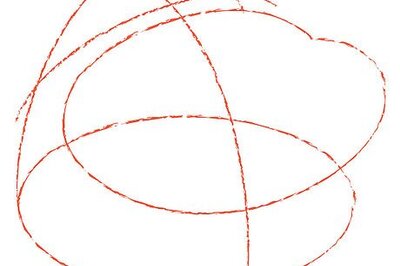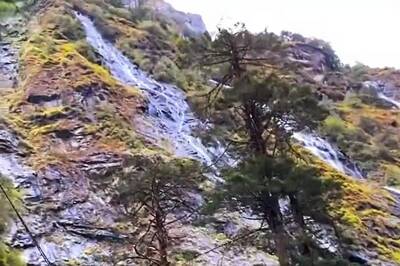
views
The untimely death of photojournalist Danish Siddique on July 16 while on an assignment in Afghanistan sent shockwaves across the globe. The Pulitzer winner, credited with some of the most riveting photographs on the Covid-19 pandemic among others, breathed his last while reporting on the fight between Afghan commandos and Taliban fighters.
As the world continues to mourn the death of a stellar artist, here is a look at the trials and tribulations in the life of photojournalists in India who venture into uncharted territories without knowing what lies ahead of them.
“When you hear of an event of this magnitude, one cannot sit it out or wait for a publication to assign you,” says renowned photojournalist Ritesh Uttamchandani while recalling the terrifying night of November 26, 2008, when Mumbai was taken siege by terrorists.
Working as an independent journalist, Ritesh set out towards Taj Hotel with a telephoto and flash in hand. His photographs of the rescue mission, wounded survivors, and the burning Taj dome in the wee hours of the morning went on to win him accolades and worldwide praise but the night leading to it was filled with fear and stress, says Ritesh.
“What worked for me though was that I was not bound by any deadlines unlike the photojournalists on assignment and could decide to return home the moment I felt tired or became injured.”
Life for independent photojournalist Harsha Vadlamani was no short of adversities as well. Having left the job of a software engineer, Vadlamani entered the world of uncertainties that photojournalism ensued.
In an interview with News18, Vadlamani revived the memories of his various assignments where he experienced the risk of losing his life from close quarters.
In 2018, the photojournalist was roped in by a magazine for an assignment whereby he had to cover a giant expedition launched by some Sri Lankan and Chinese scientists. On April 21, 2018, after boarding the flight, news of multiple bombings in the capital city Colombo started coming in. One such bombing that occurred was in a hotel Kingsbury where Vadlami had to meet the delegation the very next day.
“The situation was alarming. After I landed, I managed to find a taxi and headed to Colombo. It was then that I saw people running on the streets. Upon inquiry, I was told that a blast had taken place in the area just 15 minutes prior. Unfortunately, five Chinese scientists I was meant to cover had died in the explosion but since I was on an assignment, I wanted to return with a photo so I decided to embark on a journey to Southern Sri Lanka nevertheless,” he said.
However, having faced numerous adversities in their line of work, both photojournalists agreed that danger comes unannounced and may lie as much as in covering a drought as a sports event.
“It is not just the bullet where the risk lies,” says Uttamchandani as he travels down memory lane to his days as a young journalist. From hanging upside down from a roof to scaling a moving train, every step towards capturing a photo involves a risk.
“When Dhoni hit a six in the 2011 World Cup Finale leading India to a victory, we were busy capturing his reaction and did not notice that the ball had fallen a few feet away from us. In retrospect, the ball could have hit the head of any one of us, but we are so consumed with our task, we paid no heed to the danger awaiting us,” he says.
In another instance, Vadlamani recounts having faced a moral dilemma while he was working as a freelancer. In those days, he undertook a journey to Marathwada to cover the drought situation. After traveling for 40 days in the region and following the course of several migrant workers, the journalist was struck by a dilemma when he was offered water by one of the villagers he had filmed struggling to carry water back to his village amid its scarcity.
Besides the risk to life, photojournalists also opened up about the long-lasting impact of covering turbulent situations. Deaths witnessed during natural calamities or riots, stuck in difficult terrain while on an assignment lead to many of them suffering from PTSD or Posttraumatic stress disorder and various other mental imbalances.
While some seasoned photojournalists acknowledged the adrenaline rush motivating several young journalists to undertake life-threatening projects, they also emphasized the absolute need to observe a ‘cooling period’ or perhaps a retreat that provides a window for a photojournalist to recover from a traumatic experience.
‘Even though capturing a moment is vital for a photojournalist, to ensure one’s mental and physical well-being is of paramount importance,’ a 32-year-old photojournalist from Kolkata tells News18.
Read all the Latest News, Breaking News and Coronavirus News here.



















Comments
0 comment